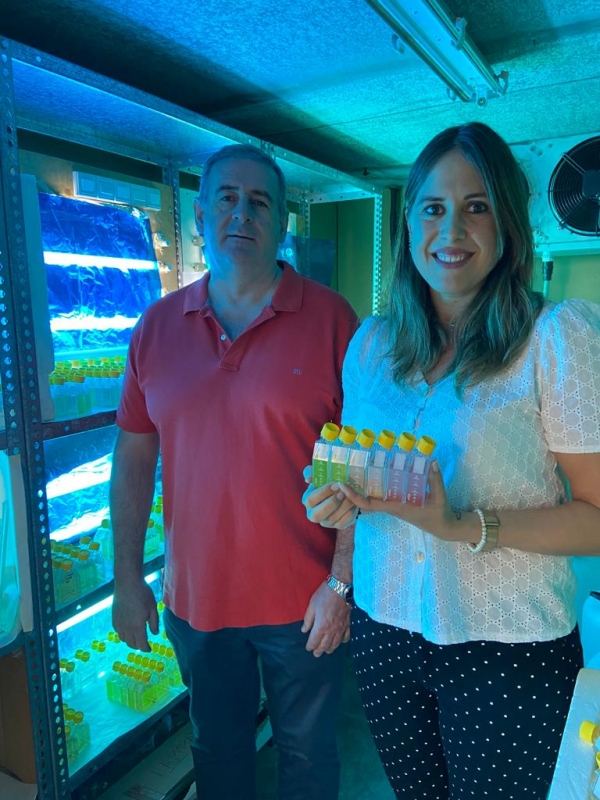The concept of "the lungs of the planet" has always been associated with the Amazon jungle, the largest rainforest in the world. But there is another much more important set of lungs that generates 50% of the Earth’s oxygen. It cannot be found in the tropical jungle of the Congo, nor in the enormous boreal forests in Russia. The actual lungs of the planet are our oceans. In them, small bacteria, invisible to the human eye, generate large amounts of oxygen via photosynthesis. These are marine cyanobacteria, and they are part of the plankton that exist in the water.
The importance of these marine organisms was discovered only a few decades ago, so there is still a lot to research about them. In 2014, Steve Biller and Sallie Chisholm’s research team at the Massachusetts Institute of Technology (also known as MIT) discovered that marine cyanobacteria release vesicles or little “bags” that contain proteins, lipids and organic compounds, among other things, into the sea. Apparently, these vesicles worked like a communication system among bacteria. Currently, there is research being done into what their functions are, and why and how they are released.
With the aim to find out more about these vesicles released by marine cyanobacteria, Project VESYNECH was born, led by the "Adaptations to nitrogen and carbon metabolism in Prochlorococcus and Synechococcus" research group, a group with vast experience studying these marine microorganisms. The research, carried out by researchers María del Carmen Muñoz Marín and José Manuel García Fernández, is focused on the cyanobacteria called Synechococcus, one of the most numerous in the ocean. In order to count and measure the size of these nanoparticles, they have Professor Francisco J. Romero Salguero from the Research Institute on Fine Chemistry and Nanochemistry (abbreviated to IUNAM in Spanish) at the University of Cordoba as a collaborator.
One of the aims of VESYNECH is to understand the mechanism by which marine cyanobacteria release these small “packets” of genetic information and organic compounds. In the two years that the project will last for, they will study whether the secretion of these vesicles happens on a regular basis or if they are prompted by stimuli. In addition, they will work to spread the word about the research results by means of a blog, in which the advances will be explained.
At the beginning of the project, researcher María del Carmen Muñoz had the opportunity to visit MIT and work in the laboratory with the team that discovered the existence of these vesicles in the ocean. There, she saw first hand the extraction techniques and the study of marine cyanobacteria vesicles in order to apply them to the project. Their collaboration continues today.
"One of the things we are researching is whether the amount of light or food affects the amount of vesicles that are released", explains researcher María del Carmen Muñoz. At the University of Cordoba laboratories, they also have Arctic marine cyanobacteria strains, to look into whether cold temperatures influence this process.
What is more, several possible functions belonging to these small vesicles have been hypothesized, and they will be researched throughout the project. "We are looking into whether they fulfill the purpose of transporting molecules as food for other bacteria since they contain organic material or if they protect against marine viruses, among other functions", says the researcher.
The vesicles also contain genetic information from the cyanobacteria that releases it so it is thought that this could also be a way of transferring genes from one bacterium to another. This would help to increase the microbial diversity in the ocean and foster these cyanobacteria adapting to different climatic settings.
Marine cyanobacteria are microorganisms that the ocean is teeming with and they play an important role in the environment since they are one of the biggest producers of oxygen on the planet. Knowing more about this system of communication among cyanobacteria could be vital in order to improve our understanding of the ocean and of the possible importance of marine cyanobacteria within the context of climate change.
The VESYNECH project - “Determination of bacterial vesicles interactions in the most abundant marine cyanobacteria and its potential applications” (H2020-MSCA-IF-2018-844891) is funded by the European Union through the programme H2020-MSCA-IF-2018.
This article is part of the communication strategy designed by the International Project Office to divulge the international projects granted to the University of Cordoba.


